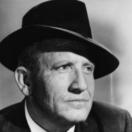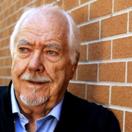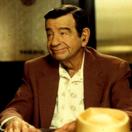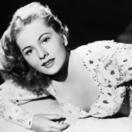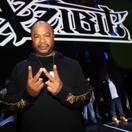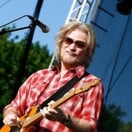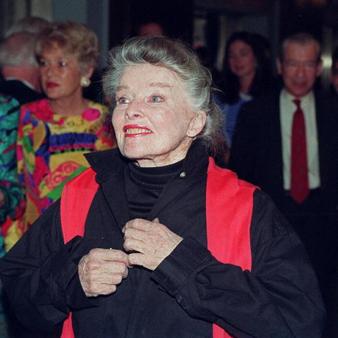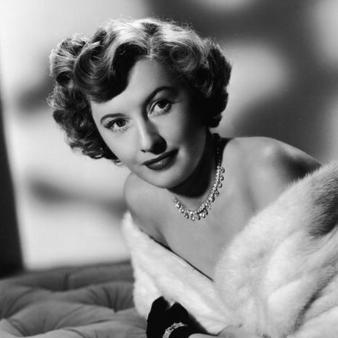- Category:
- Richest Celebrities › Actors
- Net Worth:
- $30 Million
- Birthdate:
- May 20, 1908 - Jul 2, 1997 (89 years old)
- Birthplace:
- Indiana
- Gender:
- Male
- Height:
- 6 ft 3 in (1.91 m)
- Profession:
- Actor, Pilot, Military Officer, Television Director
- Nationality:
- United States of America
What is James Stewart's Net Worth?
James Stewart was an American actor and military officer who had a net worth of $30 million at the time of his death in 1997. James Stewart, also known as Jimmy Stewart, was among the biggest stars of Hollywood's Golden Age. Known for his distinctive drawl and everyman appeal, he appeared in over 80 films between 1935 and 1991, including "Mr. Smith Goes to Washington," "The Philadelphia Story," "It's a Wonderful Life," "The Naked Spur," "Vertigo," and "The Man Who Shot Liberty Valance." Stewart won one Academy Award, for "The Philadelphia Story."
Stewart earned five Academy Award nominations. He won an Oscar for "The Philadelphia Story" and an Academy Lifetime Achievement Award. The American Film Institute named him the third greatest male screen legend of the Golden Age of Hollywood. Stewart served in World War II and the Vietnam War and achieved the rank of Brigadier General. Stewart also won two Golden Globe Awards and received a star on the Hollywood Walk of Fame at 1708 Vine Street in 1960. James Stewart passed away on July 2, 1997 at 89 years old from a pulmonary embolism.
Early Life and Education
James Stewart was born on May 20, 1908 in Indiana, Pennsylvania as the eldest child and only son of Elizabeth and Alexander. His younger sisters were Mary and Virginia. Raised a Presbyterian by his pious father, Stewart remained a devout churchgoer for most of his life. He was expected by his father to take over the family business, the J.M. Stewart and Company Hardware Store, but Stewart had other ideas. Growing up, he aspired to go into aviation. Stewart was educated at the Wilson Model School, where he was an average student due to his preference for daydreaming. He went on to attend Mercersburg Academy, where he participated in track and field, worked on the school yearbook, and performed in the glee club.
For his higher education, Stewart went to Princeton University, as was the family tradition. There, he majored in architecture and was involved in the school's drama and music clubs. After graduating from Princeton in 1932, Stewart declined an architecture scholarship for graduate school and instead joined the intercollegiate summer stock company the University Players.
Career Beginnings on Stage
In 1932, Stewart made his Broadway debut in the play "Carry Nation." Shortly after that, he had a small but popular role in the comedy play "Goodbye Again." Stewart went on to act in such plays as "Spring in Autumn," "All Good Americans," "Yellow Jack," "Divided by Three," and "Page Miss Glory."
Film Career in the 1930s and 40s
After signing a seven-year contract with MGM, Stewart made his film debut with a small part in the 1935 Spencer Tracy vehicle "The Murder Man." He had another bit part the next year in the hit musical "Rose Marie," and bigger parts in such films as "Next Time We Love," "Small Town Girl," "Speed," "Born to Dance," and "After the Thin Man." In 1937, Stewart starred in the remake of Frank Borzage's "Seventh Heaven" and in the acclaimed drama "Navy Blue and Gold." He had further success in 1938 with George Stevens's "Vivacious Lady" and Frank Capra's "You Can't Take it With You." The latter, which won the Academy Award for Best Picture, made Stewart a major Hollywood star. He went on to reunite with Capra in 1939 for "Mr. Smith Goes to Washington," which garnered Stewart his first Academy Award nomination for Best Actor. Also in 1939, he starred opposite Marlene Dietrich in the hit Western comedy "Destry Rides Again."
It was in the 1940s that Stewart cemented his status as one of Hollywood's greatest leading men. Early in the decade, he starred in two acclaimed screwball comedies: Ernst Lubitsch's "The Shop Around the Corner" and George Cukor's "The Philadelphia Story." For his performance as fast-talking reporter Mike Connor in the latter film, Stewart won his first and only Academy Award. He subsequently starred in "Come Live with Me," "Pot o' Gold," and "Ziegfeld Girl" before enlisting in the US Army Air Forces. Upon his return, Stewart starred in arguably the most iconic role of his career: George Bailey in Frank Capra's "It's a Wonderful Life." Although only a moderate commercial success at the time, the film earned five Academy Award nominations, including Best Actor for Stewart. Over the years, it became regarded as one of the greatest American films ever made. Stewart went on to star in the 1948 psychological thriller "Rope," his first of four films directed by Alfred Hitchcock, and Sam Wood's 1949 biographical baseball drama "The Stratton Story."
Further Film Career
Stewart had a career resurgence in the 1950s as a star of Westerns. His most prolific collaborations were with director Anthony Mann, who directed him in five Western films: "Winchester '73," "Bend of the River," "The Naked Spur," "The Far Country," and "The Man from Laramie." Mann also directed Stewart in such films as "Thunder Bay," "The Glenn Miller Story," and "Strategic Air Command." Also in the 50s, Stewart starred in three Hitchcock films: "Rear Window," "The Man Who Knew Too Much," and "Vertigo." He had many other successes during the decade, including "Harvey" and "Anatomy of a Murder," both of which earned him Academy Award nominations; "The Greatest Show on Earth," which won Best Picture; and "The Spirit of St. Louis," in which he starred as his childhood hero Charles Lindbergh. Stewart also starred in the box-office flops "Bell, Book and Candle" and "The FBI Story." Despite those, Stewart had had the most commercially successful decade of his career.
In the early 1960s, Stewart collaborated with director John Ford, starring in his Westerns "Two Rode Together," "The Man Who Shot Liberty Valance," and "Cheyenne Autumn." He was also part of the all-star cast of Henry Hathaway's blockbuster epic Western "How the West Was Won." Stewart's other notable credits during the decade included the family-friendly comedies "Mr. Hobbs Takes a Vacation," "Take Her, She's Mine," and "Dear Brigitte"; the Civil War drama "Shenandoah"; the survival drama "The Flight of the Phoenix"; and such Westerns as "The Rare Breed" and "Bandolero!" Stewart acted on film less frequently in the 70s, when his credits included "Fools' Parade," "The Shootist," and "Airport '77." His final live-action feature film role was in the panned Japanese film "The Green Horizon," released in 1980. Stewart's final overall role was in the 1991 animated film "An American Tail: Fievel Goes West," in which he voices Sheriff Wylie Burp.
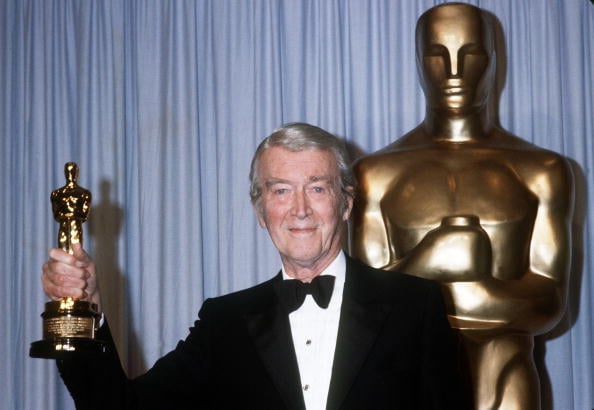
ROB BOREN/AFP/Getty Images
Television Career
Stewart began appearing regularly on television in the 60s and 70s. In 1962, he starred in John Ford's teleplay "Flashing Spikes" for ABC's anthology series "Alcoa Premiere." Early in the 70s, he starred on his own NBC sitcom, "The Jimmy Stewart Show," and also starred on the CBS legal drama mystery series "Hawkins." Despite only lasting for one season, Stewart won a Golden Globe Award for his work as the titular small-town lawyer. In the early 80s, he appeared in the television films "Mr. Krueger's Christmas" and "Right of Way." Later in the decade, Stewart was in the historical miniseries "North and South."
Political Views
A lifelong conservative Republican, Stewart was a war hawk, and campaigned for such presidential candidates as Barry Goldwater, Ronald Reagan, and Bob Dole.
Personal Life and Death
With fellow actor and lifelong friend and roommate Henry Fonda, Stewart was a playboy in Hollywood. Among the people he dated were actresses Ginger Rogers, Norma Shearer, Loretta Young, Marlene Dietrich, and Olivia de Havilland. Stewart was arranged to be married to singer Dinah Shore in 1943, but called it off due to cold feet. After the war, he began dating actress Myrna Dell. Stewart married his first wife, actress and former model Gloria Hatrick, in 1949. He adopted her two sons from her prior marriage, Ronald and Michael, and with her had twin daughters named Judy and Kelly. The pair remained together until Hatrick's passing in 1994.
Bereft after the death of his wife, Stewart became increasingly reclusive. He was hospitalized in late 1995, and again in early 1997. In July of the latter year, at his home in Beverly Hills, Stewart had a pulmonary embolism that led to a heart attack, causing his death at the age of 89.

